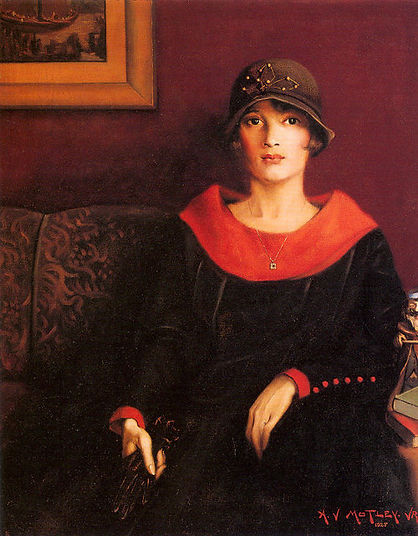
Credit: The Octoroon Girl, 1925. Oil on canvas, Courtesy of Michael Rosenfeld Gallery, LLC, New York, New York.
ARCHIBALD J. MOTLEY JR.
Challenging Racial Stereotypes
In The Octoroon Girl, "Motley constructs his model’s economic status and personality" by constructing the objects that appear in the painting. Surrounded by art, books, and plush furnishings, this well-dressed woman appears to be a member of Chicago’s African American elite.
When placed within the context of Chicago’s African-American elite, the woman in Motley’s portrait resembles those who served as role models by which those who desired to join the elite ranks had to reach. These African American women labeled the “Talented Tenth” by W. E. B. Du Bois held the responsibility of racial uplift; whereas “members of the black elite and upper middle class would rise and pull upward” those below them.
The woman in The Octoroon Girl intentionally represents social, racial, and economic progress. Motley’s images of fair-skinned women in middle class settings were a visual rebuttal to the popular media images of the “mammy” or the “Jezebel” of black women which occupied the mind of the majority of Americans. On the other hand, Motley’s portrait conforms to the hierarchical linking of complexion and class. “The appearance and status of the “octoroon” refutes the concept of a monolithic blackness and challenges the prevailing link of blacks with poverty”, since Motley only placed African Americans with fair skin in settings of success and prosperity.
For Motley, this woman represented the ideal and most beautiful type of blackness, based on his writings and interviews; “he praised the appearance of fair-skinned women, relating their fine manners and pleasing temperament to their physical appearance and mixed status.” His opinions reflect a stereotypical preference for light-skinned women versus dark-skinned women contradicting his appreciation for all racial types.

